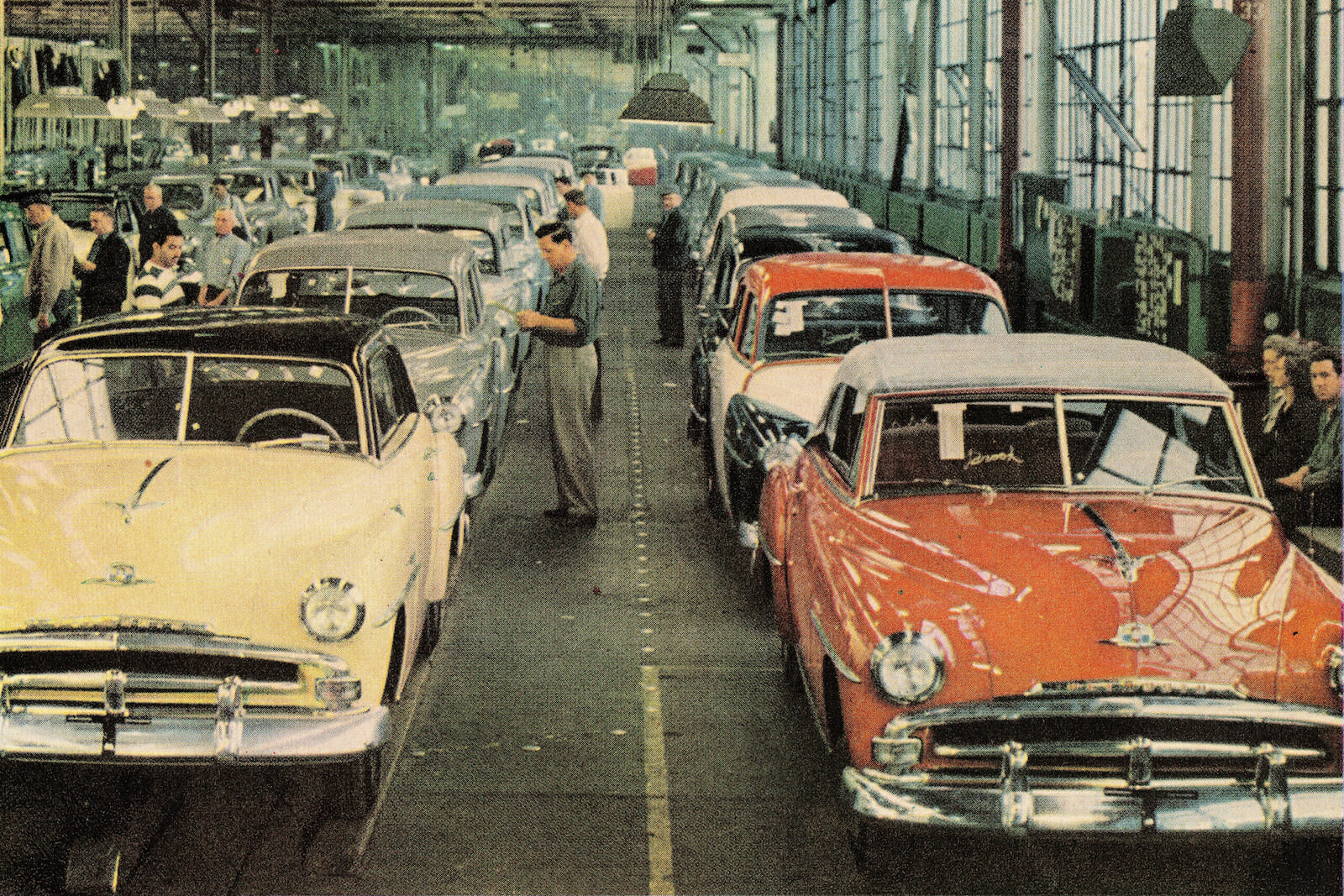
Tech
Automation and Job Creation
Emperor Vespasian said, “You must allow my poor haulers to earn their bread,” when faced with a proposal for a machine that would help with the transportation of columns throughout the Roman Empire. His anti-automation stance was ill-conceived for someone so intent on squeezing every economic drop from the masses that he imposed a tax on the collection of their urine for use in industry. Opposition on grounds of vulgarity to this tax led to his now famous maxim that, “Money doesn’t stink.”
His anti-automation stance was nothing new. Like his modern contemporaries, he found it easy to blame abstract forces such as globalization, immigration and automation as the causes of economic hardship. However, rather than blaming technology, we should instead examine the nature of automation, along with those policies, that set-out over decades, have minimized the opportunity for average workers to share in the enormous gains we’ve seen from technological innovation.
Typically, arguments against automation are founded on two flawed bases. Firstly, there is an aura of mysticism around AI which creates a lack of distinction between autonomy and automation. It’s often assumed that the adoption of AI techniques supposes that there is autonomy in the algorithms at play, when in reality the boundaries and limits of both their current and near-future operation are tightly controlled. This has ramifications for the types of work that we might anticipate can be replaced in the foreseeable future. Secondly, the historic data demonstrating the ability of automation to transform economies is bypassed by those preferring the narrative that it simply kills jobs.
Automation is not autonomy: think tasks not jobs
Products such as Alexa, Duplex and Cortana have led the way in the arena of general-purpose intelligent assistants. For many, these assistants have blurred the line between autonomy and automation. This is understandable. After all, in addition to being hugely impressive and useful, some (quite literally) effuse that dim the lights, suggestive of the idea that someone might be home.
However, a significant portion of what lies under the hood of these (and more domain-specific systems) boils down to plain-old automation. A huge effort is dedicated to specifying the rules governing operational behavior, boundary condition and gracefully mitigating the failure modes of these systems. Advanced AI and ML techniques may be used to define these playbooks, but ultimately the outcomes are set. This is the definition of automation.
It is a world away from autonomy…Autonomy is far more challenging and complex. It is the basis of human intelligence. The complexity of the human mind is defined by its single most useful evolutionary benefit — its remarkable ability to adapt to infinite unknowns. It is the level of dynamism, ingenuity and adaptability exhibited by humans that make us capable of performing “whole jobs.” AI algorithms do not operate as broadly as humans do, and nor may it be desirable for them to do so in many cases. Or, put better: “People continue to infer that something involving neuroscience is behind it, and that deep learning is taking advantage of an understanding of how the brain processes information, learns, makes decisions, or copes with large amounts of data. And that is just patently false.” — Professor M.I Jordan (MIT and Berkeley Machine learning)
There’s no argument that automated systems will not cause disruption as they move into the workplace. However, the range of tasks they can perform are likely to be narrow in both scope and focus and will not suffice to replace whole jobs. This is in line with their automotive, rather than autonomous, nature. In this way, they will complement our activity and thus boost our own productivity. As David Autor, MIT economist, puts it: “Automating a particular task, so that it can be done more quickly or cheaply, increases the demand for human workers to do the other tasks around it that have not been automated.”
A recent McKinsey review suggests that in fact very few — less than 5% — of jobs are candidates for full automation today. It estimates that half of an individual’s job tasks could be automated. This chimes with a recent OECD study, which predicts that around 10% of US jobs and 12% of UK jobs are candidates for full automation, with the remaining requiring interplay between humans and their automated colleagues.
This task-centric view on job automation better reflects the historic data on automation’s nature in the workplace. In this view, there is the capacity for humans and computers to not only work in conjunction, but to be more productive in the process by sharing in their efficiency gains. When even Michael A. Osborne, coauthor of the much-berated Oxford Martin study that suggested that up to 47% of jobs in the US could be automated in the near future, says, “I think a lot of the risk to professions has been overhyped,” then we must be skeptical of idle speculation. The reality is far from replacing us. Automation gives us the opportunity to reduce dirty, dull and dangerous tasks and unlock time for managerial, problem solving, more human, and creative work.
Humans are killing robot jobs
Given coverage about the relentless impact of AI on employment, it is curious to consider that the productivity gains expected over the last 10 years of automation are virtually non-existent. Textbook economic theory says that increases in productivity mean that production can happen quicker and cheaper within the same amount of time. This increases supply, decreases prices, and thus increases real wages.
The importance of this process is best captured by Nobel Laureate Paul Krugman’s now (overused) quote that, “Productivity isn’t everything, but, in the long run, it is almost everything. A country’s ability to improve its standard of living over time depends almost entirely on its ability to raise its output per worker.” In The End of Poverty: How We Can Make It Happen in Our Lifetime, developmental economist Jeffrey Sachs makes it clear that, “The single most important reason why prosperity spread, and why it continues to spread, is the transmission of technologies and the ideas underlying them.”
From 1995-2005 (the height of the internet/information revolution), productivity averaged almost 3% annually in the US. Growth also averaged almost 3% annually in the golden age from 1947 to 1973. It is no coincidence that these eras saw remarkably low unemployment rates and vastly improved living standards. In recent years, Asia has managed to reach record low levels of unemployment and higher living standards by embracing automation.
By contrast, just about every Western economy has seen very slow (averaging less than 1% in the US) productivity growth over the last decade. This has contributed to economic stagnation in wage growth and living standards. In the UK, despite a bit of an uptick at the beginning of this year, we’ve even seen negative growth in some industries of around -0.3%. This circumstance is equivalent to workers replacing automated systems. The concern that autonomous agents are replacing vast swathes of the workforce is thus unassailable. On the contrary, failure to innovate and improve the rate of automation should be the core issue occupying the thoughts of our policy makers.
As important as is the problem of productivity, equally low is unemployment on the agenda of economic governors such as the Bank of England and Federal Reserve. Given that both have increased interest rates within the last year and may be contemplating doing so again, it is clear that their sights are set on keeping inflation in-check (and thus lowering employment levels), rather than the prospect of runaway unemployment purported to be being caused by automation.
Far from killing jobs, the historic effect of automation has been the net creation of jobs. This is widely supported by virtually every long-term analysis of the relationship between automation and jobs. The previously mentioned Deloitte study found the ratio of jobs created: lost to automation as roughly 4:1. In addition, those new jobs paid on average nearly £10,000 more per year than the ones that were lost. A more comprehensive OECD study on jobs over 5 decades stated unequivocally: “Historically, the income-generating effects of new technologies have proved more powerful than the labor-displacing effects: technological progress has been accompanied not only by higher output and productivity, but also by higher overall employment.”
This positive outlook is also shared by the managerial class. A study by Erik Brynjolfsson, Director of the MIT Initiative on the Digital Economy, shows that for every dollar of capital invested in computers, firms made $10 of complementary investments in ‘organization capital.’ This trend seems set to continue, as highlighted by a recent survey of 18,000 employers across 43 countries, in which respondents predict that automation in their industries will lead to an increase in jobs and their intent to up-skill their workforce: “Most employers expect automation and the adjustment to digitization will bring a net gain for employment . 83% intend to maintain or increase their headcount and up-skill their people.”
Policy and Choices
That said, automation doesn’t come without concerns, the biggest of which are that it causes capital-biased technological change (which is the argument that automation unequally favors the wealthy) and the likelihood that it disproportionately hurts middle-income, mid-skilled jobs. Likewise, there is emerging evidence that in recent decades there has been a significant decline in job growth and increase in wage stagnation for middle-class occupations across western economies.
Why then, knowing that for large parts of our history we’ve seen the concurrent growth of living standards for the average worker along with automation, would we only now expect to see negative distributional outcomes being caused by automation? The case must be made that deliberate policy shifts in recent decades have facilitated such unequal distributional effects. At a high level we can focus on three topics in an attempt to address the impact of automation on its losers: policy, social security, and education.
First, we should recognize that while pure market forces have their place in the blame game, inequality is a matter of choice. If we’re serious about reducing inequality (and the effects of automation) then we need to target structural policies that disproportionately favor high skilled/income jobs at the expense of low-middle skilled/low-middle income jobs.
In addition to addressing wide ranging policy, we should be providing social programs to pre-empt and better ease the likely impact of automation. For instance, safety nets that better support the complex dynamics governing relations between employers and workers have proven effective. As exemplified by the ‘flexicurity’ policy of EU countries like Denmark, it is possible to develop an adaptable job market on the basis of employment security over job security. Such a system provides high social security and training to workers, while also promoting innovation. In Germany, the effects of a strong social policy can be seen in the automotive industry, where despite a high level of automation, redundancy in the sector is minimal.

